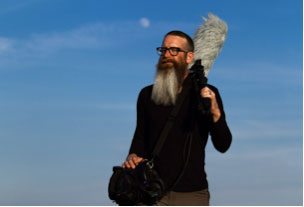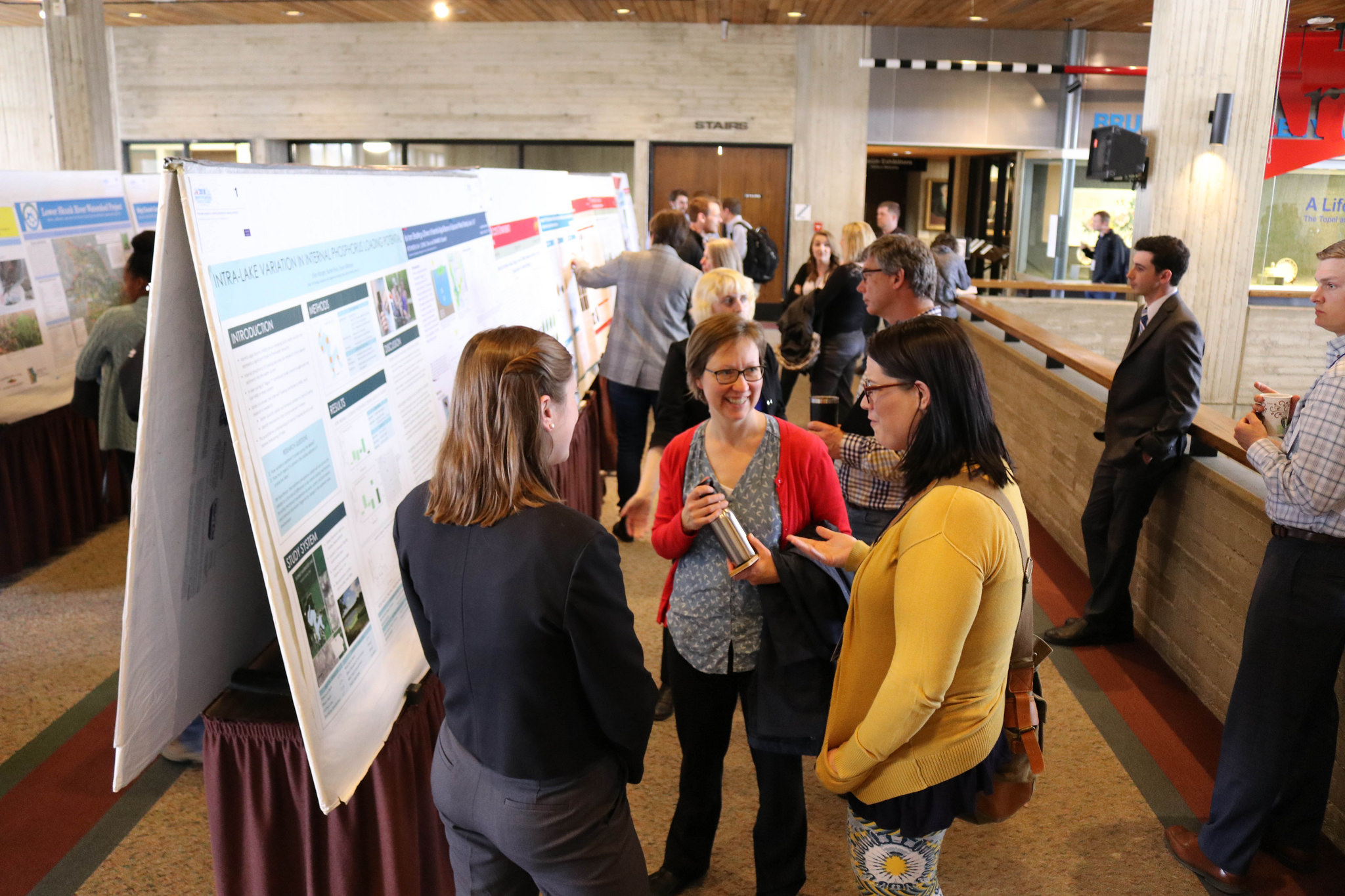By: Meghan Hanley, Outreach and Engagement Assistant
The Iowa Water Center started the Iowa Water Scholars Book Club where members of the Iowa Water Scholars community read and discuss novels on pressing water issues.
For the June 2020 book club discussion, the Iowa Water Scholars Book Club read Blue Mind: The Surprising Science That Shows How Being Near, In, On, or Under Water Can Make You Happier, Healthier, More Connected, and Better at What You Do, or Blue Mind for short, authored by Wallace J. Nichols. This novel delves into the science behind why people are drawn to water, as well as the many benefits this has.
Alex Braidwood is a professional sound artist, designer, and educator. He records sounds found in nature and the relationship between art and science.
Just as music exemplifies emotions, Braidwood explains that sounds in nature also hold a lot of information. This information, presented in a unique platform, creates an opportunity for new discussions to happen in several communities, especially in the art and science communities.
While people may typically think art and science are two separate worlds, they often collide without anyone noticing. Braidwood views artists and scientists to have jobs that complement each other.
A similarity that Braidwood has found throughout the years working with both artists and scientists is that both occupations have comparable starting processes.
First, they start with a question, then they go through a process to figure out how they can find their answer. Although both fields of work start from different perspectives, they both require detailed observations, documentation, questions and methods in order to reach their end goal.
Both occupations come along with very in depth concepts and information. Because of this, it can be very difficult to disseminate the information found with people outside of their field. This is when scientists and artists can collaborate to help each other. In Braidwood’s view, scientists and artists have a cyclical relationship. Since both occupations derive from varying perspectives, this can allow a scientist to review an artist’s work, and vice versa, and create the opportunity to bring up new viewpoints, as well as help make the information more accessible for the public to understand.
One of Braidwood’s intentions of his work in acoustic ecology is to help people be more aware and appreciative of their surroundings. Braidwood commonly refers back to the term “active listener.” He explained that the act of hearing is the mechanical process ears go through, but listening is when the mind is involved and engaged. In order to help people become more aware of their environment, Braidwood tries to implement several participatory projects in his work, such as walking tours.
In Blue Mind, mindfulness is discussed frequently, and Braidwood shared that he had to learn several lessons about being able to just sit in silence. He also presented a few tips for people to practice if they are wanting to improve their active listening skills. He said that simple exercises are the best way to start. First, start off small, and just pay attention to your ears and the sounds you are retrieving. Then, start testing yourself. What is the smallest sound you hear? What is the farthest sound? What are you hearing to your left? To your right? Being able to center the mind on hearing comes with different psychological calming effects that everyone can benefit from.
Braidwood has always been drawn to sound. He grew up playing in bands and always enjoyed music, then started studying as a graphic designer and would incorporate sounds within motion designs. His interest in electronic music spiked his curiosity to research how sound and communication coincide. Along with playing music in his younger years, Braidwood also spent a lot of his time outdoors. It wasn’t until around the time that he was starting graduate school that he realized he could combine these two parts of his life.
Braidwood has done sound projects all over the world, ranging from Australian national parks to Iowa farms. A major area that Braidwood often returns to is the Iowa Great Lakes region in Northwest Iowa. With all of the prairieland, wetland and lakes, Braidwood explained that he is able to retrieve very rich and diverse soundscapes. He also shared that his favorite nature sound is a thunderstorm.
“It’s my favorite sound for a bunch of different reasons,” said Braidwood. “I have done enough [self] investigation of this and it comes from growing up in Michigan and having epic thunderstorms rip through, and then living in Southern California with very few thunderstorms, and to now come to Iowa and experience the Midwest Plains version of a thunderstorm … it doesn’t even compare.”
Blue Mind brought up the idea that everyone is drawn to water in some capacity. Braidwood agreed with this theory, and mentioned that he was initially drawn to the novel because of this idea. He explained that he had never thought of water as in depth of a concept as that before, but after reading this novel, it helped him have an understanding of why this is.
If you would like to watch the full recorded discussion with Alex Braidwood, here is the link.
If you are interested in joining the Water Scholars community, visit our Water Scholars page.
You can view some of Alex’s work here.

